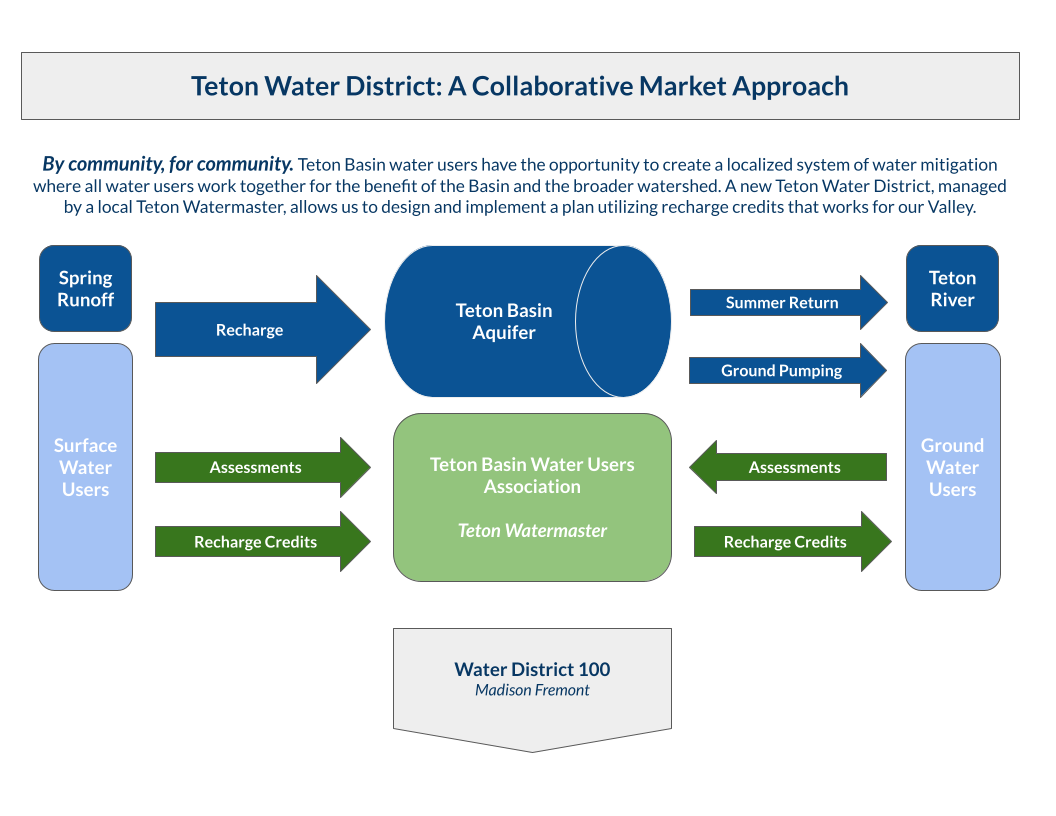A Market Approach to Groundwater Recharge
Irrigators recognized that the practices their parents and grandparents implemented could be a solution to Teton Valley’s declining aquifer. Teton Basin Water Users Association launched a two-year pilot program in spring 2018, making payments to a few Teton Valley irrigators to increase incidental recharge during the spring months, using their existing water rights.
By flood irrigating their fields when water is abundant in Teton Valley, local agricultural producers are turning the area’s aquifers into an alternative, natural, and cost-effective water storage mechanism.
Promising results from the two-year pilot led to the expansion and continuation of the program into 2021 and beyond.
The Details
The market is driven by the premise that water is worth significantly more ecologically and economically in July and August than it is in April and May. Our primary strategy is to replace declining snowpack storage with groundwater storage, thereby delaying the delivery of headwater basin water to downstream users and raising local aquifer levels. The Teton Basin geology results in instream delivery of water 1-3 months after it is recharged into the ground, raising aquifer levels in the interim, and increasing late season water supplies. In essence, the market serves to turn April and May water into functional July and August water.
The demand side of the market is formed by beneficiaries of the more abundant late season water: individual downstream farmers, downstream canal companies and irrigation districts, and local municipalities who face increased pumping costs due to the declining aquifer. The supply side of the market is composed of irrigators in the Teton Basin who hold water rights and have the ability to increase incidental recharge through modified irrigation practices.
Water rights and irrigation practices in the Teton Basin are uniquely suited to this approach. Water rights in the basin are typically available for use on April 15th, although irrigation typically does not begin in earnest until June 1. The market targets modifying irrigation practices between April 15th-June 1st to increase incidental recharge during this period. Upstream farmers will return to normal farming practices during the normal growing season (after early-spring runoff).
Incidental recharge relies on canals and flood irrigation. While most farmers have transitioned to center pivot irrigation, the historical canal systems still exist and can be used or revitalized with minor upgrades. This is a market to incentivize new management of existing water rights and infrastructure rather than navigating water right transfers. It does not require additional oversight by the Idaho Department of Water Resources. Teton Basin water rights holders simply modify how they utilize existing rights for beneficial use.

